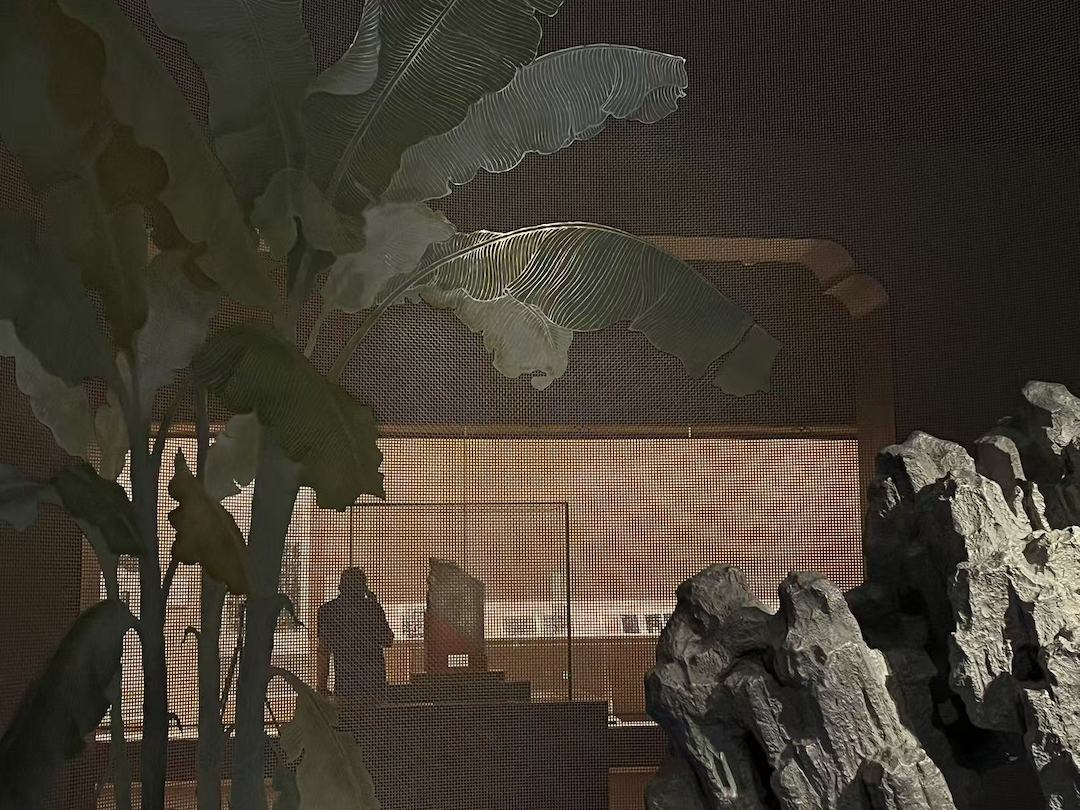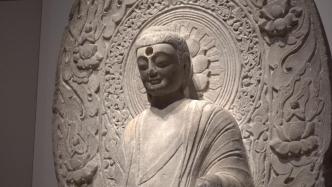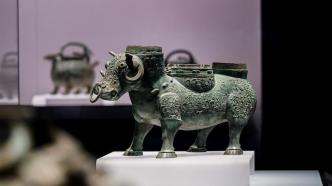
On the eve of the Spring Festival, with the official opening of the East Building of the Shanghai Museum, the Ancient Chinese Bronze Hall in the East Building of the Shanghai Museum also took the lead in trial opening, presenting the most complete display of ancient Chinese bronzes at home and abroad to the audience. There are more than 500 selected exhibits in the entire display, including more than 60 first-class items, accounting for about 60% of the first-class bronzes in the Shanghai Museum's collection. Most of the exhibits in the original display will continue to be on display, such as the Dake Ding, Xi Zun, Zizhong Jiangpan, etc. which are the treasures of the museum. At the same time, nearly a hundred new exhibits were added, including turquoise medallions and single-wing bells from the late Xia Dynasty, a pot with early bronze inscriptions, Shang Yangfang Sheng from the Warring States Period, etc.
Appreciation of some important bronze cultural relics in the special selection of "The Paper: Ancient Art".

Shanghai Bo East Pavilion Ancient Chinese Bronze Pavilion

exhibition site
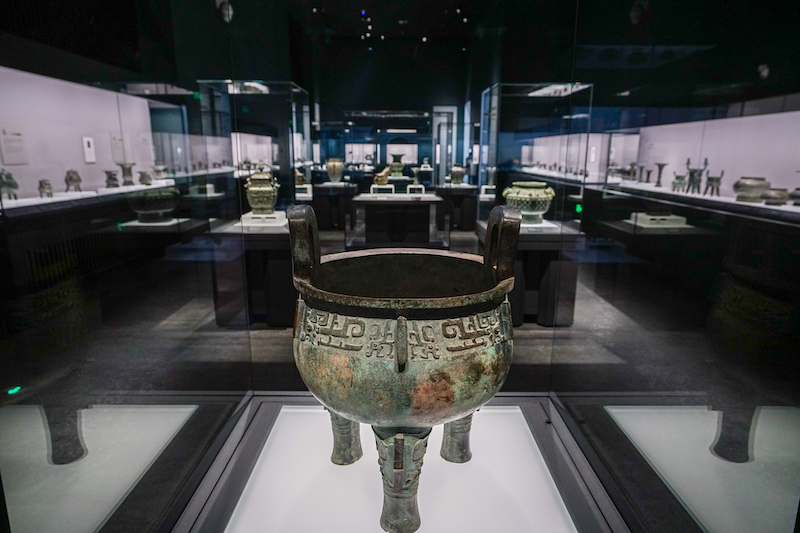
exhibition site
Inlaid animal mask plaque
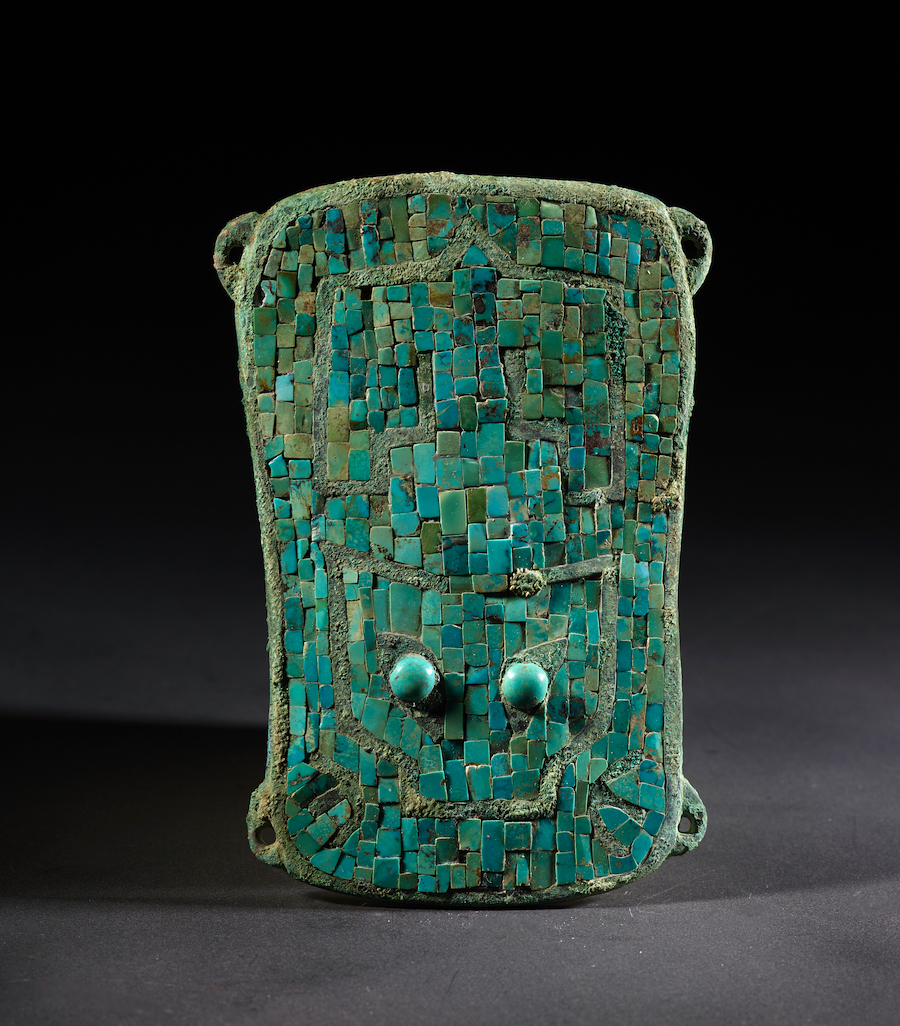
Inlaid animal mask plaque, late Xia Dynasty (18th century BC - 16th century BC)
It may be inlaid with an animal-faced medallion or worn, and accompanied by a bell when in use. The main frame of the vessel is made of bronze, with four obtuse corners and a slightly sub-waist shape. There are symmetrical buttons on both sides. The turquoise is inlaid with animal face patterns. It is exquisitely made and has been preserved for more than 3,000 years. Well, it reflects the superb bronze inlay technology and turquoise processing technology at that time. Similar artifacts have been unearthed at the Erlitou site in Henan Province.
Jia Hu
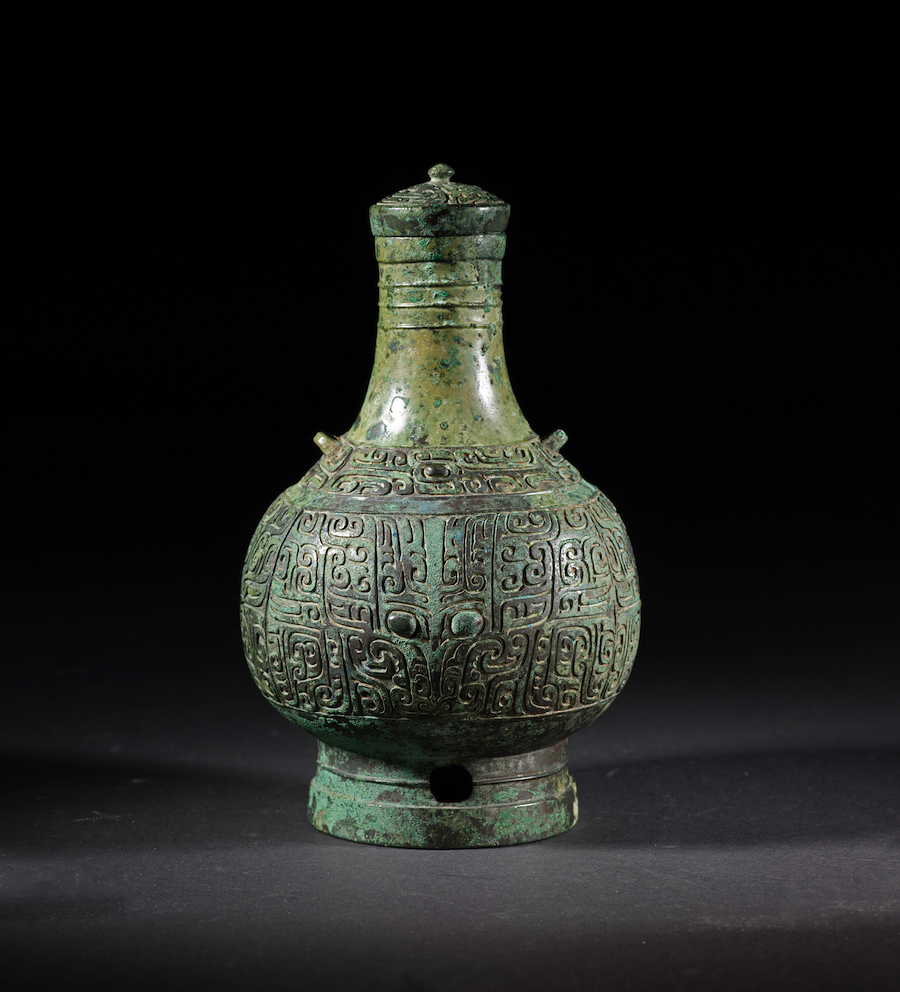
Jiahu, mid-Shang Dynasty (mid-15th century BC to 13th century BC)

Jiahu, mid-Shang Dynasty (mid-15th century BC to 13th century BC)
The pot is a vessel for holding wine. This pot has a long neck, a spherical belly, and two horizontal buttons on the shoulders. The lid and shoulders are decorated with dragon patterns, and the belly is decorated with animal masks. The decoration is outlined with incised thin lines, and the animal eyes are round and convex, which is a typical decorative style of the early and middle Shang Dynasty. The inscription "A" is cast on the inside of the circle foot, which is one of the earliest bronze inscriptions.
dragon shaped chime

Dragon-shaped chime, late Shang Dynasty (13th century BC - early 11th century BC)
The chime is a percussion instrument. The whole body is in the shape of a dragon. There are bird-shaped curved edges on the back, a rectangular hole underneath for hanging, and curved legs like legs under the abdomen. There are ten breast nail-shaped pieces, the large piece in the center of the abdomen is the beating point, one piece is set at the head of the dragon as the eye, and the rest are arranged along the edge, with the same decoration on both sides. The bronze chime belongs to the bronze ware in the Yangtze River Basin.
Four sheep heads

Four-sheep-headed vessel, late Shang Dynasty

Exhibition view of four sheep-headed utensils, late Shang Dynasty
The gourd is a vessel for holding wine. There are four large horned sheep heads on the shoulders of this vessel, which are three-dimensional and imposing. The upper edge of the abdomen is decorated with alternating fire patterns and "sub-shaped" patterns, and the abdomen is decorated with breast-leaf patterns, which are formed by placing the oldest breast-nail patterns on Shang Dynasty bronzes within the rhombic gray patterns. The copper in the whole device is mineralized to produce basic copper carbonate. The surface is shiny green, exquisite and mysterious.
The sheep's head of this vessel directly covers the shoulder decoration. From this, it can be inferred that the sheep's head was made by the split casting method, that is, the main body of the pot was cast first, leaving a hole in the shoulder, and then a pottery mold was placed in the hole to cast the sheep's head. The alternating composition of fire patterns and "Ya" patterns has only been found in bronzes unearthed outside the Yin Ruins in the early and middle Shang Dynasty, and the casting area is still a mystery.
Yujiao
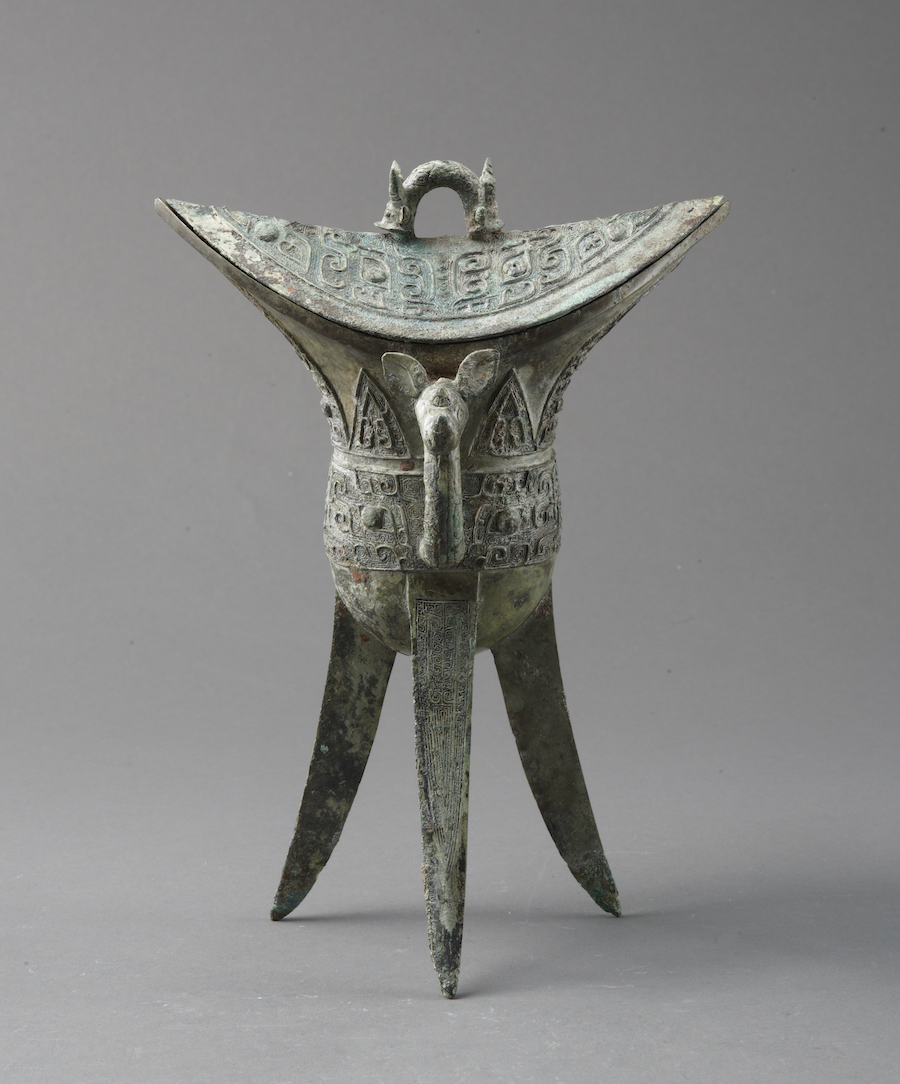
Yujiao Early Western Zhou Dynasty (11th century BC)
The horn is a wine vessel. It has a lid, an arc-shaped mouth, and an oval belly that supports flat triangular cone feet. There is a rhinoceros head on one side of the abdomen, and a rhinoceros head relief on the same position on the reverse. The use of rhinoceros heads is the biggest decorative feature of this vessel. The cover is decorated with animal mask patterns and rhinoceros head patterns. Both sides of the abdomen are decorated with animal facial patterns with curled horns. The vessel and lid have the same inscription with two lines and seven characters.
Jin Hou Su Zhong
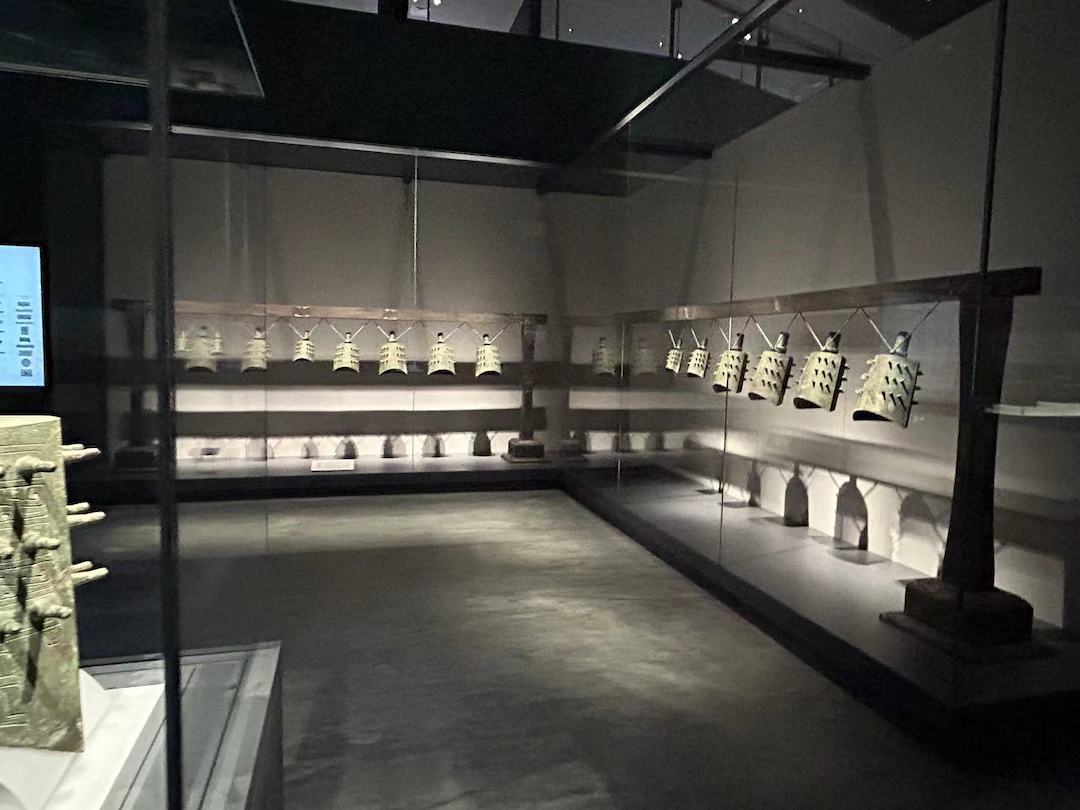
Exhibition scene Late Western Zhou Dynasty Jinhou Su Zhong
In this group of chimes, the larger one is 52 centimeters high and the smaller one is 22 centimeters high. They are all Yong bells.
In 1992, 16 pieces were unearthed from the Jinhou Cemetery in Beizhao Village, Quwo County, Shanxi Province. They can be divided into two groups, with 8 pieces in each group. They are arranged in two rows of chimes with harmonious scales and rhythms. A total of 355 inscriptions were engraved. This is the first example of a bronze bell in the Western Zhou Dynasty having its inscriptions carved with sharp tools. The inscription records the event of Jin Hou Su accompanying King Li of Zhou to personally conquer the Su barbarians in the east. It is not recorded in history books and is an important supplement to the historical materials of the Western Zhou Dynasty. It can also be used to calculate the Western Zhou calendar.
Zizhong Jiangpan
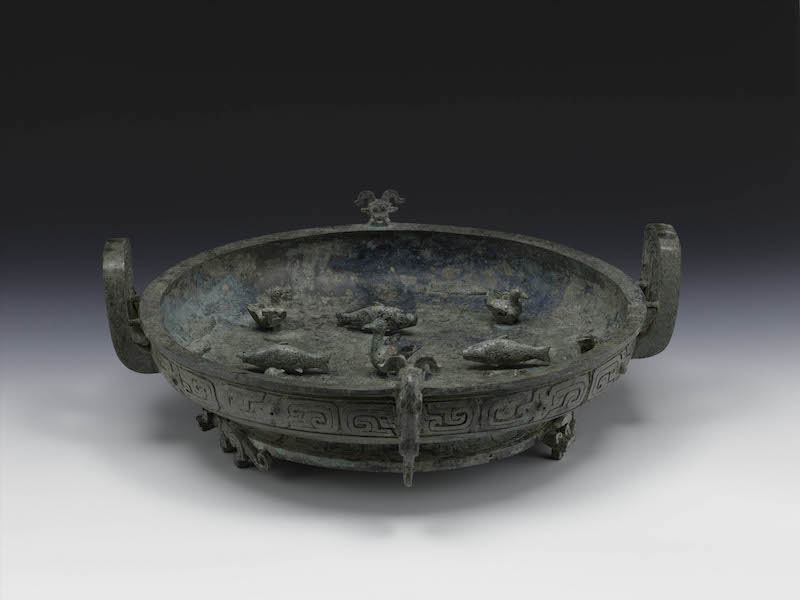
Early Spring and Autumn Period Zi Zhong Jiang Pan
It has a square lip, a folded rim, a shallow belly, a circle foot at the bottom, and three curly-tailed tiger legs attached below. There are two attached ears, the attached ears are much higher than the rim of the dish; diagonally opposite to the attached ears, there are two animal-shaped beasts with curved corners and round eyes, limbs clinging to the belly of the device, and the mouth holding the rim of the dish, as if exploring water. The circumference of the plate is decorated with curved patterns with protruding middle eyes. The outside of the attached ears is decorated with heavy ring patterns, while the inside is plain; the ring feet are decorated with hanging scale patterns. There is a round sculpture of a male water bird in the center of the plate, which is arranged in concentric circles outwards. The first circle is a relief sculpture of two frogs and two turtles, the second circle is a three-dimensional fish, and the third circle is a three-dimensional sculpture of four female water birds decorated with turtles and turtles. Frogs, the fourth circle is a three-dimensional three-dimensional frogs and seven relief fishes. All three-dimensional animals on the plate can rotate 360 degrees. This artistic expression technique has never been seen before, showing the progress of casting technology in the early Spring and Autumn Period.
There is an inscription on the bottom of the plate with 6 lines and 32 characters (heavy text 2). The main meaning of the inscription is that on the auspicious day of Xinhai in early June, the master made a wash basin for his wife Zhongjiang. precious.
The basin is an ancient Chinese toilet bowl, used to hold water, and is usually paired with a bowl. The Zizhong Jiangxi grouped with this dish is now in a private collection in the United States.
Inlaid with thorns and thorns

Late Spring and Autumn Period, inlaid with thorns and thorns, unearthed from Fenghuang Mountain, Songjiang, Shanghai
The shape of this statue was changed after transplanting the statue from the Western Zhou Dynasty. Different areas of the body are decorated with thunder patterns, deformed animal patterns, thorn patterns, zigzag patterns, and nipple patterns. In terms of decoration, except for a few influences from the Central Plains, it is mainly the obvious regional characteristics of Wuyue culture. There are traces of falling off inlays such as stone flakes in the middle of the abdomen. Inlaying patterns on bronze ritual vessels is a phenomenon that only appeared on utensils in the late Spring and Autumn Period.
The decoration on this statue is exquisite and profound, and some of the lines on the decorative facade are as thin as paper. Its casting method has not yet been studied. This is the only Pre-Qin bronze artifact unearthed in Shanghai.
Sacrifice Zun
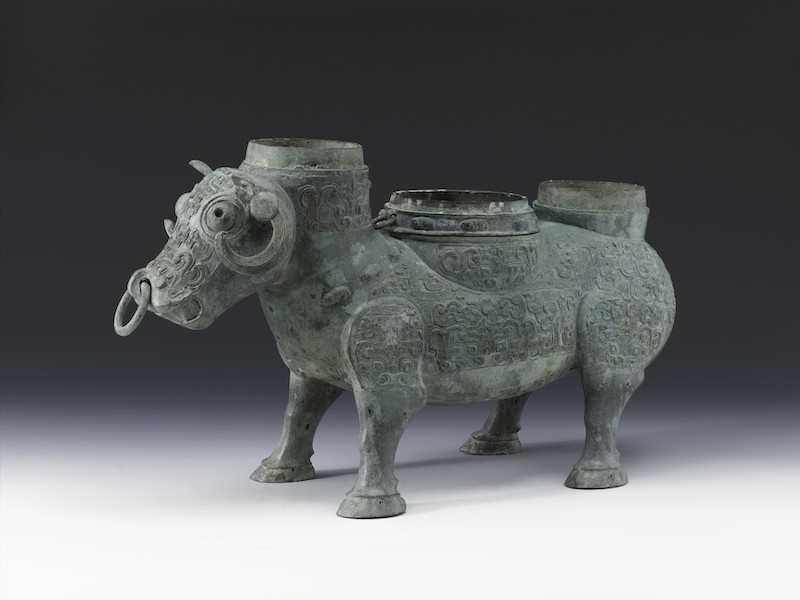
Late Spring and Autumn Period Xi Zun unearthed from Liyu Village, Hunyuan County, Datong City, Shanxi Province
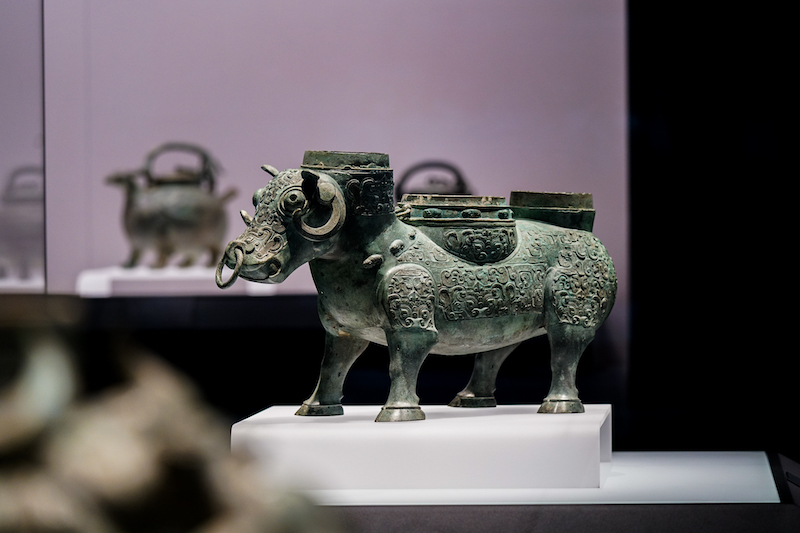
Exhibition view Late Spring and Autumn Period Xi Zun
It is in the shape of a buffalo. The belly of the cow is hollow. There are three holes on the neck and back of the cow. There is a pot-shaped container in the middle hole, which can be taken out. Judging from its structure, this is a wine warming vessel. The pot-shaped vessel on the back of the cow can hold wine, and the hole is filled with water and placed in the belly of the cow to warm the wine. The use of animal forms to design the shape of wine vessels is a characteristic of Chinese bronzes. This vessel has a stable shape. Although its legs are short and short, the tense horns on the cow's head and the round eyes maintain a sense of reality, harmoniously combining shape and practicality. There is a ring pierced on the nose of the cow, which shows that in the Spring and Autumn Period, the method of piercing the nose had begun to be used to tame cattle. It is a valuable material for studying the history of livestock domestication in China. The decoration is exquisite. The cow's head, neck, body, legs and other parts are decorated with animal masks composed of coiled dragon and snake patterns. The use of impression technology can be seen through the decoration. The cow neck and pot-shaped vessel are decorated with reliefs of tigers, rhinoceros and other small animals, which are vivid in shape and exquisitely cast.
Zun is a wine vessel that has been used since the early Shang Dynasty. Until the Warring States Period, it was the longest-used bronze vessel shape. The basic shape is: large opening, shoulders, high circle feet, mainly round, but also square.
Shang Yangfang Sheng

Shang Yangfang Sheng, the 18th year of Qin Xiaogong in the Warring States Period (344 BC)
Shang Yang's Fang Sheng is a measuring instrument. There are thirty-two inscriptions engraved on the left wall, which record that in the 18th year of Qin Xiaogong (344 BC), the Daliang manufacturer Martingale cast a standard liter with a capacity of sixteen and one-fifth cubic inches per liter. The inscription at the bottom is the edict of Qin Shihuang in the 26th year of his reign. This instrument is an extremely important physical document in the history of Chinese weights and measures.
diamond box

Diamond box, Western Han Dynasty (206 BC - 8 AD)
The whole device is oblate spherical. There is a sheep-shaped button on the cover, and earrings with animal heads on both sides of the abdomen. The decorations are all made of chiseling, with the main decorative rhombus pattern on the cover and belly of the vessel. A unicorn auspicious animal is engraved on the edge of the lid and the mouth. If the upper and lower patterns match, the button and ears are in a balanced state. This is a special mark made to pay attention to the symmetry of the utensil.
Zhonggong wild goose foot lamp

Wild Goose Foot Lamp in the Middle Palace, 3rd year of Jianzhao period of the Western Han Dynasty (36 BC)
The upper end is a lamp plate, which is in the shape of a circular groove. The central column is an independent goose foot, and there is a circular seat under the foot. The leg joints of the wild goose are realistic and give people a sense of stability. It can be seen from the inscription on the lamp plate that this lamp is self-inscribed as "Goose Foot Lamp". It was made in the third year of Jianzhao. It was owned by the Queen's Middle Palace and was later given to the Yangping Hou family.
The same laws of weights and measures, imperial edicts, balancing poles and imperial edicts

Tonglu weights and measures imperial edict balance pole and imperial edict version first year of the new founding of the People's Republic of China (9th year)
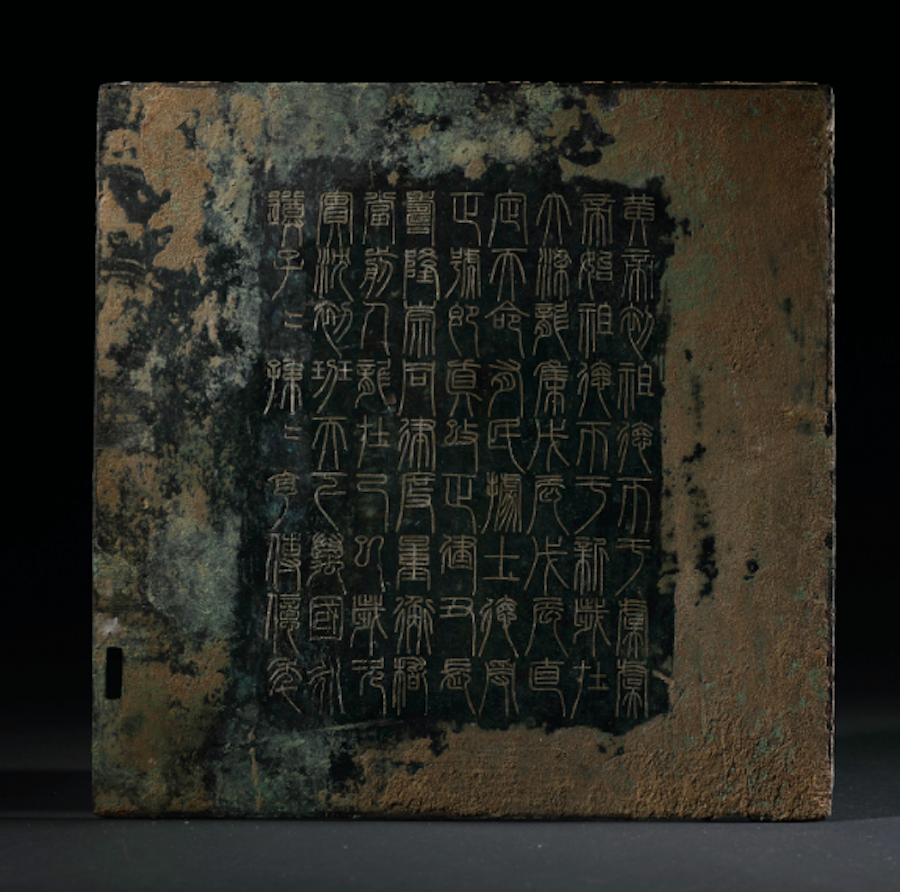
Tonglu weights and measures imperial edict balance pole and imperial edict version first year of the new founding of the People's Republic of China (9th year)
Bronze weighing pole, the shaft is a flat rectangular parallelepiped, with a flat nose button cast in the middle; hanging buttons are cast on the bottom surfaces of the left and right ends, set vertically with the shaft, the width is equal to the thickness of the shaft, and there are small round holes in the middle, horizontal The middle part of one side of the shaft is engraved with Xinmang's seal edict "Tonglu Weights and Measures", with a total of 20 lines and 81 words. Bronze imperial edict plate, nearly square, with 81 characters in Xinmang seal script "Tonglu Weights and Measures" engraved on the front, divided into 9 lines, with 9 characters in each line. The inscriptions are neatly styled, with large, elegant and dignified characters. The characters are about 2 centimeters long and most are 1.2-1.4 centimeters wide. Tonglu weights and measures, imperial edict balance poles and imperial edicts are of great significance to our understanding of the politics and culture of the Xinmang period.
Dasheng Rui (ruí) binzhongshengzhong
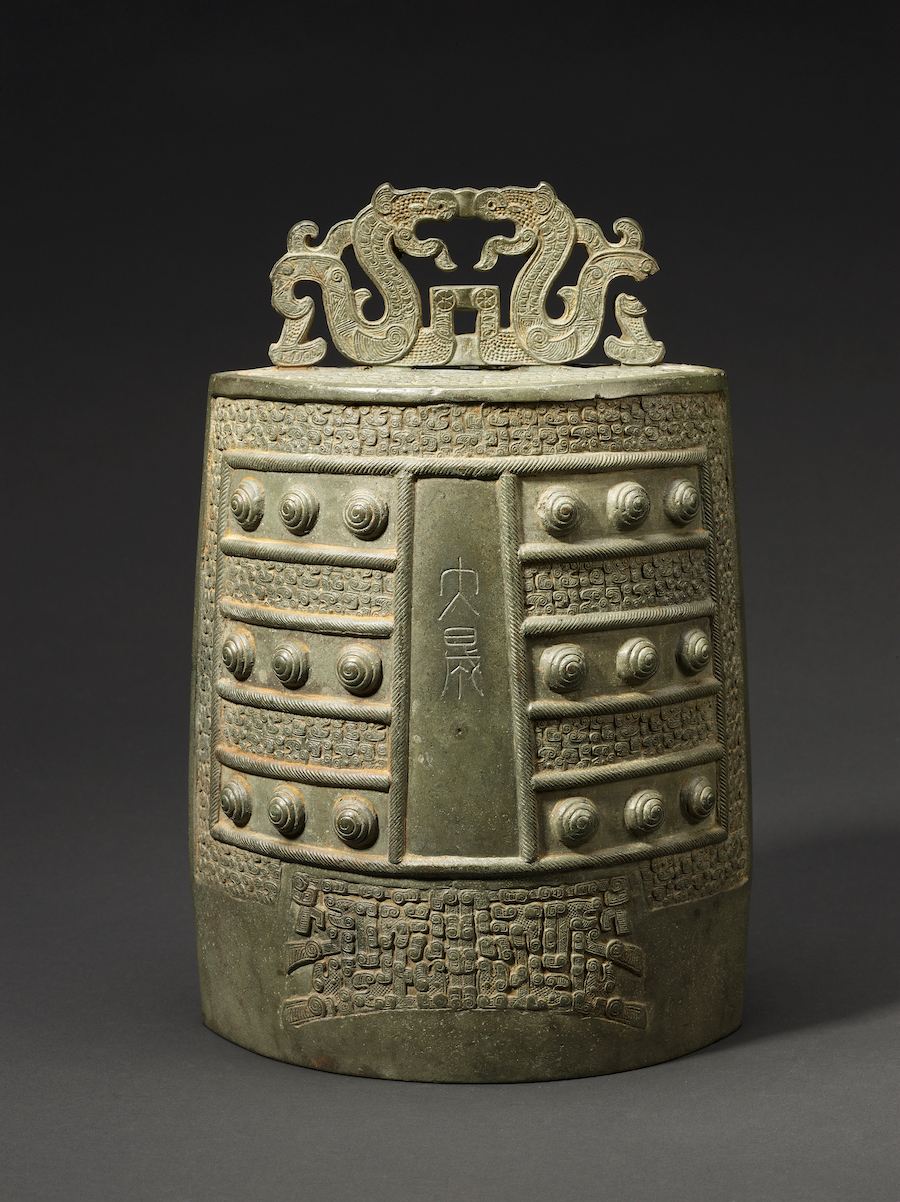
Dasheng Rui (ruí) Bin Zhongsheng Zhonghe, Northern Song Dynasty (1111-1117)
One of the Dasheng bells made by the Dasheng Mansion, the official office in charge of court music during the Huizong period of the Northern Song Dynasty. According to records, the shape and decoration of the bells are imitations of the Song Gongxu bells unearthed in the late Spring and Autumn Period at that time, and a total of 12 sets were cast. The front and back are engraved with the inscriptions "Da Sheng" and "Ruibin Zhongsheng", which should be the seventh piece of Zhongsheng.
Spray fish wash
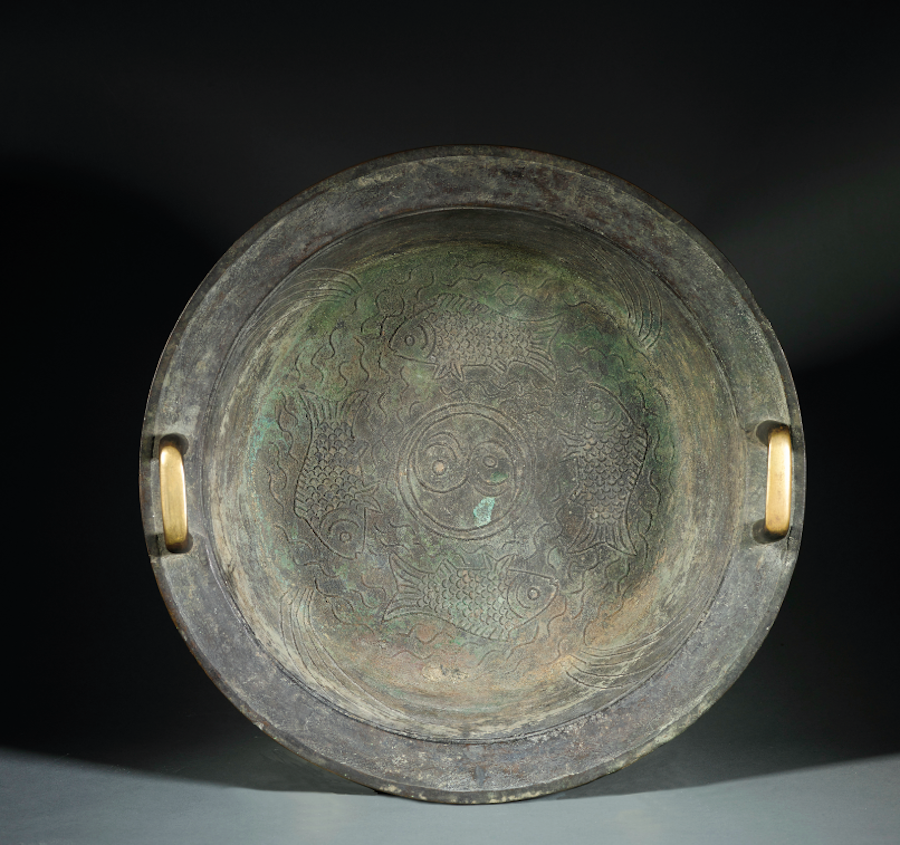
Spraying fish with water, Ming Dynasty (1368-1644)
Wash, an ancient toilet utensil. The bottom of the basin is decorated with four relief carps, also known as fish wash. When clean water is poured into the basin and the ears of the fish wash mouth are repeatedly rubbed with both hands, the fish wash will not only make a "buzzing" sound, but also the water surface at the fish mouth will stir up water splashes, creating a water spray spectacle. This is because the friction of the hands to wash the ears provides a vibration source for the vibration of the bronze wash. The vibration of the bronze wash can be divided into transverse vibration perpendicular to the wash wall and longitudinal vibration along the wash wall. When transverse vibrations are excited from the bronze-washed ears and propagate in opposite directions, the shear waves stripped off will interfere and form a standing wave phenomenon, that is, antinodes and nodes are generated. The antinodes are the locations with the largest amplitude and the nodes are the locations with the minimum amplitude. . At the antinode of the wave, the wash wall oscillates and slaps the water surface, causing violent water splashes to form a spray column. The relief carp is placed exactly at the antinode of the wave, so it looks like the effect of a swimming fish hitting the water.
